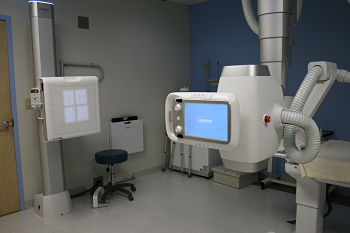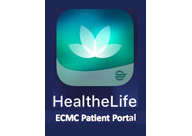
Routine X-rays involve exposing a body part to a small dose of radiation to produce an image of an internal organ. An X-ray image is produced when a small amount of radiation passes through the body and strikes a plate placed on the other side of the body. This image is digitally stored on a computer.
Radiography low dose DR
Radiography (Chest, Abdomen and Extremities)
Routine X-rays involve exposing a body part to a small dose of radiation to produce an image of an internal organ. An X-ray image is produced when a small amount of radiation passes through the body and strikes a plate placed on the other side of the body. This image is digitally stored on a computer.
Radiography is available Monday thru Friday 7 am till 5:30 pm as walk-ins. (These do not need to be scheduled)
Radiation Risks
The period of time between radiation exposure and the detection of cancer is known as the latent period and can be many years. Those cancers that may develop as a result of radiation exposure are indistinguishable from those that occur naturally or as a result of exposure to other carcinogens.
Furthermore, the National Cancer Institute literature indicates that other chemical and physical hazards and lifestyle factors (e.g., smoking, alcohol consumption and diet) contribute significantly too many of these same diseases.
Because radiation doses are often difficult to comprehend, here's a little perspective in radiation doses received through just living in Ellsworth County.
In our county, we receive about 329mrems (3.29mSv) of combined radiation exposure per year.
This radiation comes from the cosmos, the earth and our food.
Those people living in areas having high levels of background radiation - above 1,000mrems (10mSv) per year - such as Denver, Colorado, have shown no adverse biological effects.
These can be compared to:
a. CT head exam which amounts to 200mrems (2mSv) of exposure
b. Chest x-ray which is 10mrems (.1mSv) of exposure
c. Mammogram is 48mrems (.48mSv) of exposure
Less than 10,000mrems (100mSv) - spread out over long periods of time (years) doesn't cause an immediate problem to any body organ.
High-dose exposure, greater than 50,000mrems (500mSv) increases the risk for cancers including leukemia, breast, bladder, colon, liver, lung, esophagus, ovarian, multiple myeloma, and stomach cancers.












